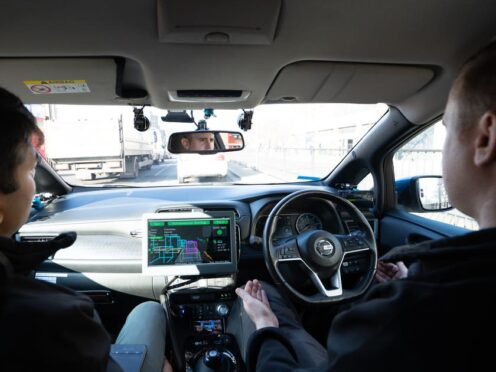Self-driving vehicles could be used on Britain’s roads in just two years, a Cabinet minister claimed, as a Bill outlining the legal framework for autonomous vehicles became law.
Transport Secretary Mark Harper said the deployment of the technology will be “a real boost to both safety and our economy”.
The Automated Vehicles Bill received royal assent on Monday.
The legislation, which applies across Britain, delivers “the most comprehensive legal framework of its kind worldwide”, according to the Department for Transport (DfT).
It means motorists will not be held responsible for the action of a vehicle in self-driving mode, with businesses such as insurers, manufacturers and software developers liable when something goes wrong.
The DfT added that self-driving vehicles must achieve a level of safety at least as high as “careful and competent human drivers”.
Trials of autonomous vehicle technology are ongoing across the UK, such as by Wayve in London and Oxa in Oxford.
Mr Harper said: “Britain stands at the threshold of an automotive revolution, and this new law is a milestone moment for our self-driving industry which has the potential to change the way we travel forever.
“While this doesn’t take away people’s ability to choose to drive themselves, our landmark legislation means self-driving vehicles can be rolled out on British roads as soon as 2026, in a real boost to both safety and our economy.”
Mike Hawes, chief executive of the Society of Motor Manufacturers and Traders, said: “This is a watershed moment for UK automotive innovation and road safety in the UK.
“Self-driving vehicles will revolutionise our society, and this new law will help turn ambition into reality, putting the UK alongside a handful of other global markets that already have their regulatory frameworks in place.
“The industry will continue its close collaboration with government and other stakeholders to develop the necessary secondary legislation that will enable the safe and responsible commercial roll out of self-driving vehicles and the significant social and economic benefits they will afford the UK.”
